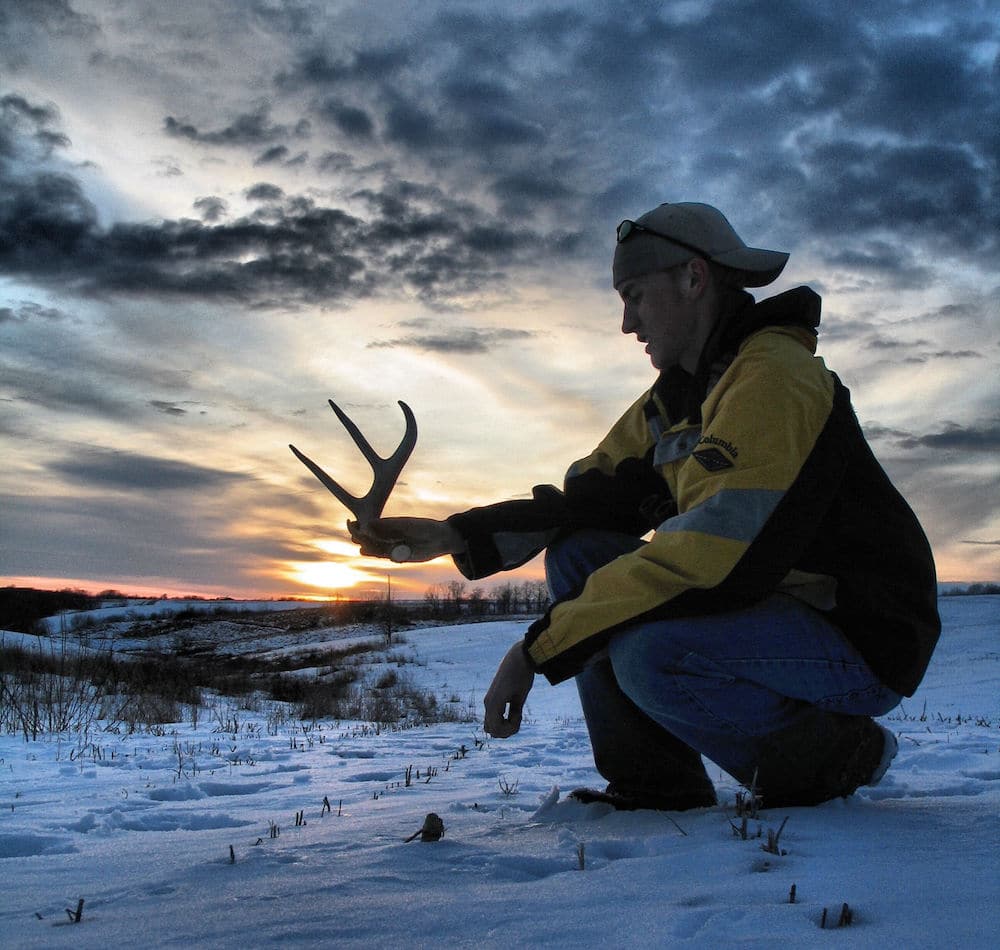For dedicated hunters, bowhunting whitetails is more than a seasonal pastime. When the sun sets on the final day of archery season, the following sunrise kicks off the beginning of a new season of endless opportunities. If you’re already counting down to opening day, these offseason activities will set you up for your best season yet.
When it comes to deer behavior and seasonal intel, there’s no such thing as “too much.” Winter scouting missions often yield critical information that’s necessary for a better understanding of the area you hunt. Deer have endured a long season of hunting pressure, which causes major shifts in bedding areas. Use snow cover to your advantage to backtrack major bed-to-feed trails to identify their late-season lair. Take note of nearby food sources like crops, timber cuts or good mast trees. Store this information in the notes of your favorite mapping app and be sure to reference it next year.
Many land managers suggest a chain saw is an essential tool for whitetail hunters. Old-growth timber shades out the understory and prevents it from growing, which eliminates precious bedding areas on your hunting property. On the other hand, young forests receive plenty of sunlight to grow high stem-count new growth, which is essential for bedding cover and browse. Contact a forester before you start felling trees to learn the difference between trees that should be removed compared with higher value timber, such as oaks and walnuts. In general, species like ironwood, beech, birch and maple are prime candidates for cutting.
Finding hunting access can seem like a virtually impossible task. Not to mention, asking for permission is uncomfortable, and you’re usually going to be told “no.” However, as Wayne Gretzky once said, you miss 100% of the shots you don’t take, and that statement certainly applies to hunting permission. Be creative with your approach. Nate and Thomas Krick, owners of the popular Identical Draw YouTube channel and newhunter.org website casted a wide net for turkey hunting permission in 2022 as they wrote letters to more than 100 landowners. In exchange, they were granted more than a thousand acres of hunting access. Their secret? Be personable, address the landowner by name, and be clear with what you want, your knowledge of the property lines, and respect for the resource.
Don’t seek out the properties that appear turnkey on an aerial map, complete with food plots, beautiful stands of timber and a few recreational ponds for wildlife and fishing during the summer. Instead, target overlooked spots, like a cattle pasture adjacent to a large woodlot, small parcels next to wooded subdivisions or large crop farms with minimal timber.

Where you find the shed can tell you a lot about the deer. Photo Credit: Bowhunters United
Get out and scour the woods for shed antlers. It’s a fun pastime that burns calories, beats cabin fever and can provide valuable information to help you fill your tag next season. You can learn a lot from finding a shed. It’s proof of life that the buck is likely to be in the area next season. You can also decipher what the buck was doing when he dropped his antler based on the habitat type you find it in. For example, an antler found in a picked cornfield was likely dropped in the middle of the night as a buck searched for precious late-season calories. A matched set lying side by side on a cedar-choked southern slope was likely dropped as the buck stood from his bed and shook the sleep from his eyes after a midafternoon nap. Next time you find an antler, think about the context the surrounding area is providing and consider how that’ll impact your hunting strategy next season.
Last, but certainly not least, consider planting a food plot for the upcoming hunting season. Food plots serve as a great attractant for whitetails and can help create a focal point of activity in areas that set up well for hunting. There’s an entire process that factors into food plot preparation, including soil tests, fertilizing, and choosing the right seed. Start by identifying your goals for the plot and the time of year you’re hoping to attract deer. The plot’s location, size and pressure it’ll receive from deer will dictate what seed blend best suits your needs.
There’s no shortage of tasks to be checked off the whitetail hunter’s to-do list. The projects accomplished during the offseason often impact success in the field during the season. Don’t wait — get out there and lay a foundation for next fall to be your best ever.